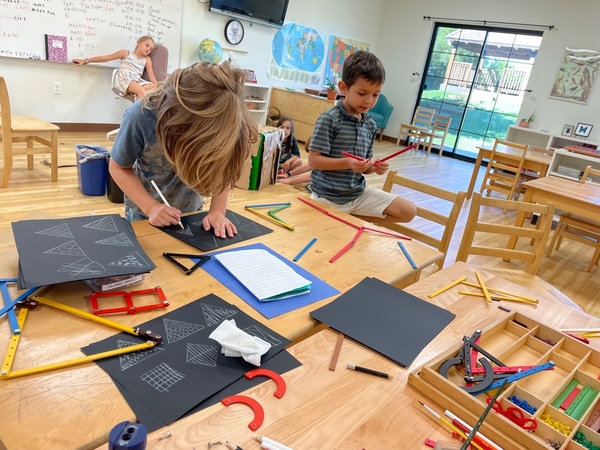(858) 759-0631
How can we teach our children to treat others more socially, emotionally, and empathetically?
How often do we read the news about bullying?
Surely, it’s been going on forever.
Remember how another classmate teased, taunted, or made fun of you?
Of course. Those memories do not tend to go away.
Happily, today’s generation of educators and parents is tackling more than just academic learning. We’re teaching Social and Emotional Learning (SEL), too!
One way to teach this topic is by focusing on ‘the other person rather than ‘ourselves.’
How do we as parents do that? By keying on constructive motives—rather than destructive motives—of the other person.
The Montessori Method, the 110-year-old individualized learning system founded by Maria Montessori, seeks to teach children about learning and talking about their emotions and feelings. This approach is far different than just teaching kids about facts and figures.
Four tips on teaching children about emotions, feelings, empathy, and compassion:
TIP 1: Teach empathy
Think about the other person and their perspective.
How?
Walk a mile in their shoes.
What actions are forcing the other person to outwardly negatively react? How can we positively react to someone bothering us? Maybe it’s as simple as offering a loving response to diffuse a tough situation.
TIP 2: Provide insight to your children
Say something like, “People think and behave differently—especially when trying to understand their feelings and emotions. That’s what makes the world special.” Be positive and teach your children to think that way.
Children pick up many parental traits. If they hear daddy bad-mouthing his boss or reacting negatively to news or politics on TV, the child may use that approach to think and talk like his father. It’s important to focus on what’s right and good when our kids are in earshot.
TIP 3: Validate your children’s feelings
One key element of SEL teaching is to acknowledge what your child is feeling. Unlike previous generations where children were seen and not heard, today’s kids have the floor. They benefit when their parents listen to them and give them the ability to talk about what they are feeling. The outgrowth? A stronger understanding of themselves and others.
TIP 4: Ask questions
Finally, switch up the conversation. On an everyday basis, children ask us questions to learn more about the world around them. The endless cycle of ‘who, what, when, where, why, and how things are is how kids learn.
What the Montessori Method adds to the mix, however, is this: parents asking their children questions!
By asking open-ended questions like "how do you feel about this" or "why do you think he/she hurt your feelings," we help our children participate in the process and outcome of a particular hurt or problem. What may have begun as someone else teasing your child may end with the child discussing ‘why’ it happened and ‘how’ to stop it from happening again.
Summary
Montessori schools teach ordinary children how to be gifted learners. The focus on building the whole child rather than just the academic part is part of how the Montessori Method builds self-esteem, independence, and leadership.
Although the American workplace will be far different twenty years from today, the traits that employers will seek remain constant: curious young people who can approach problems methodically, systematically, and with a degree of social and emotional learning to spur other employees to succeed.
This article is edited from source material published in The Washington Post, on April 27, 2018, entitled “Ways to Teach Kids to See the Best in Others,” by Sarah Hamaker (www.parentcoachnova.com); comments by Melissa Divaris Thompson, Scott Amyx, and Lynn R. Zakeri; the teachings of Maria Montessori; and, analysis by Kristin Edwards, M.Ed., Director of Lifetime Montessori School.

